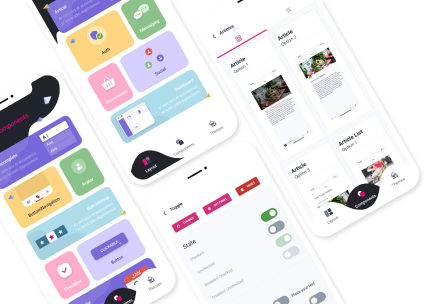Kickoff Meetings: Why They Are Crucial And How To Succeed With Them
4 min read
Kickoff meetings are to successful projects what code is to developers – a natural union. Yet, so few organisations use kickoff meetings (or run them successfully). Perhaps you didn’t, either – until now.
The truth is: kickoff meetings play a significant role in the overall success of your software project, even if that project is so large it needs to be broken up into phases.
Holding them, and doing them right can actually set everyone up to succeed from the beginning, making them a worthwhile investment in managerial time and staff resource.
What holds organisations back is the lack of a good process around their kickoff meetings (including an understanding of why they are important). This is especially if working with offshore developers who might not have that shoulder-to-shoulder proximity.
At Groove Technology, we love and value good process – it’s the backbone of how we operate everyday. So, I wanted to share how we run our software development project kickoff meetings for technical managers looking to level up. Let’s kickoff.
Start with a clear ‘define and align’ strategy
Kickoff meetings are to help all stakeholders of a project align on the roles, goals, ‘why now’s’ and ‘exactly how’s’ before everyone really gets down to business.
It should be run by a single project lead who is responsible for keeping the agenda intact, and redirecting when any discussions begin to pivot away from that. Start by articulating why everyone is present, and allow all stakeholders to introduce themselves and their intended contribution – this builds trust, familiarity and transparency from the outset.
It should also cover delivery milestones and expectations as well as appropriate contact and escalation points, allowing everyone to align on what is required of them and how they can expect things to progress.
Never silo information or tools
Work on the premise that everyone involved in the project should have equal access to the specific information and tools related to that project.
This isn’t to say that everyone should have no-holds-barred access to important company intel, but at the very least there should be enough trust present to empower stakeholders with what they need to do their best work.
Ideally, this should be agreeing on the protocols for communication avenues, relevant project tools, and access to accounts, including third-party accounts if they are important. Make sure it’s understood the sensitivity of this information, but communicate how it can and should be accessed, and that this access is open to everyone.
Keep things high-level, at least for the beginning
Remember, this isn’t a meeting to discuss the nitty-gritty.
There will be plenty of opportunity for that throughout the project’s lifecycle and of course, any agile workplace would reasonably expect some of the project to change at some stage anyway – on that note, here’s how I generally recommend managing remote team dynamics for maximum trust, collaboration and performance
Work on keeping project vision high-level for the kickoff meeting, with a view to simply understanding major functions and responsibilities.
This is much easier when the scope and timeline of the meeting is pre-agreed with very key stakeholders beforehand. This is sometimes called an internal kickoff, and can be as simple as getting verbal sign-off on the agenda.
Explain all ‘what-if’ scenarios
Any good project lead will agree: a change management plan is imperative. What happens if code is delayed? What happens if the scope must change for reasons unforeseen? If someone at another part of the business isn’t ready with their function?
Going over ‘what happens if’ by way of a preordained change management process shows foresight and leadership.
In particular, make sure team members know where to log concerns or changes, who to speak to if something requires escalation and how to communicate this more broadly to one another.
It helps people feel empowered to be active participants in the process rather than fearful of the repercussions of change, which only leads to negativity and passing the buck.
Some other key things to note
- Remote kickoff meetings should be done via a video conference; facial recognition, body language and tone-of-voice is important. The quality of the conference is also very important; crackly or intermittent network will only frustrate attendees, and everyone should be comfortably seated, wherever they are.
- Dedicate someone on the team specifically to a note-taking role. The project lead will be busy keeping things on-track and discussing the agenda, so allocating that responsibility to someone else means nothing gets missed.
- Use the end of the kickoff as a place to hear feedback and make any changes, if necessary. When team members start to separate on their own workload, this can be trickier to do. Assign it the time it needs.









